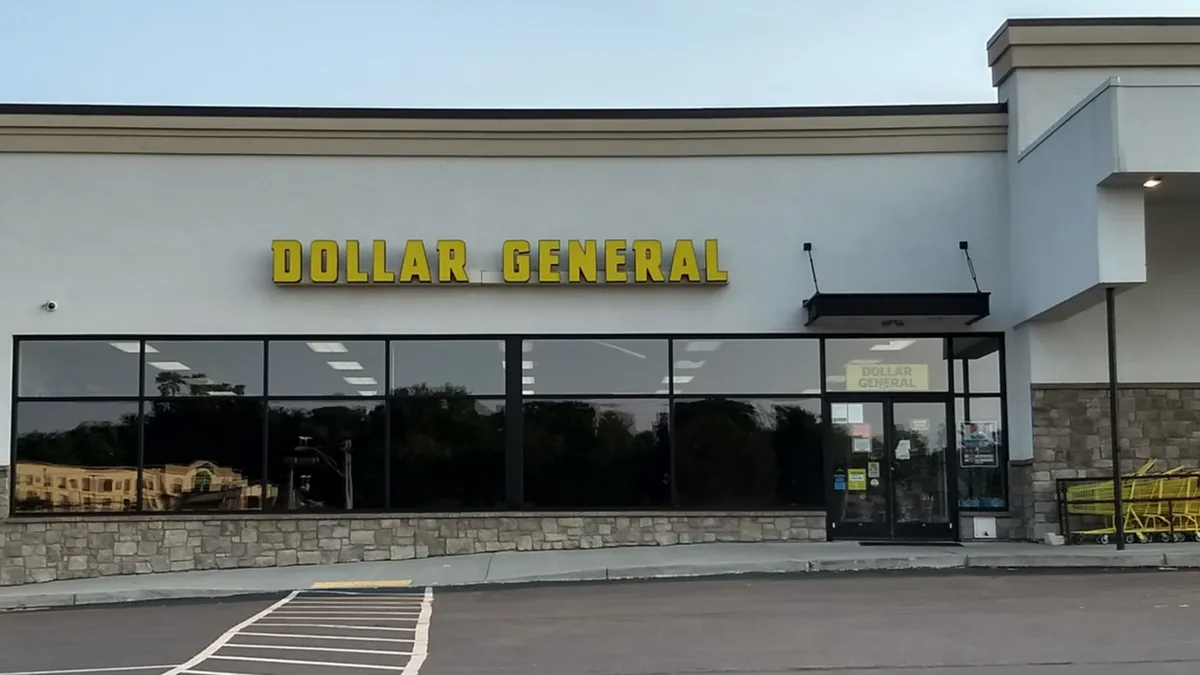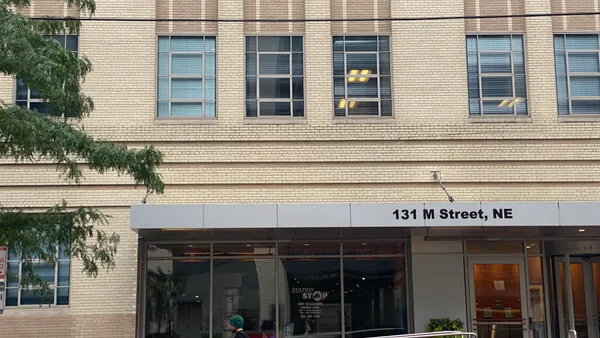Dive Brief:
- The Occupational Safety and Health Administration has proposed a $136,741 fine against a Dollar General store in Greencastle, Pennsylvania, for repeatedly blocking and constricting exit routes, the U.S. Department of Labor announced July 5.
- In response to a complaint, OSHA began inspecting the store in December 2021, according to the announcement. Inspectors found excessive amounts of merchandise in the aisles and the stockroom, which prevent “employees from freely, safely and quickly exiting a workplace in an emergency and can lead to serious injuries or worse,” OSHA Area Director Kevin Chambers said in a press release.
- The store received citations in June 2021 for the same hazards, OSHA said. The company has 15 business days from the receipt of citations and penalties to comply, request an informal conference with the OSHA area director or contest the findings, according to the agency. Dollar General did not respond to a request for a comment before press time.
Dive Insight:
OSHA sets and enforces rules implementing the Occupational Safety and Health Act. The rules describe what employers are required to do to maintain a safe workplace, according to the agency. They cover a number of topics, including specific hazards, such as hazardous chemicals, falls and exposure to some infectious diseases or harmful substances, such as asbestos. The rules also require work sites to have exit routes, which must be “free and unobstructed,” adequately lighted and satisfy a number of other requirements, the regulations said.
To ensure safe workplaces, OSHA conducts on-site inspections. There are a few things employers may need to know about them. First, the OSH Act gives OSHA broad investigative authority, and OSHA conducts almost all of its litigation “discovery” during the inspections, the law firm Epstein Becker Green noted in a checklist.
Second, there’s normally no advance notice. OSHA will provide it under four conditions: in cases of apparent imminent danger; when the inspection has to be after regular business hours or when special preparations are necessary; if management and worker representatives aren’t likely to be on-site unless they have advance notice; and when the OSHA area director thinks advance notice is necessary for a more complete inspection, such as when a fatality occurs, according to a guidance from the National Council for Occupational Safety and Health.
Third, worker complaints can trigger an inspection. In particular, workers can ask for an inspection if they believe there’s a serious hazard on the work site or the employer has violated OSHA rules, an agency fact sheet stated. Inspecting these complaints gets high priority, topped only by situations that present an imminent danger or reports of a work-related fatality or severe illness or injury, such as a work-related amputation.
The inspection itself involves an opening conference, a “walkaround” and a closing conference. Preparation is critical, Epstein Becker Green said. The guidance provides a checklist of actions employers can take before, during and after an inspection.
For example, the checklist suggested employers develop, maintain and keep current a written safety program, including a formal program for reporting and resolving employee safety concerns. Employers should also establish an inspection team and inspection protocols and familiarize everyone with management’s, workers’ and the OSHA inspector’s rights during the inspection, the guidance added.
Before entering the workplace for an inspection, OSHA must have an administrative warrant or get employer consent to the inspection. Employers may want to consider waiving the warrant requirement but should only do so after “negotiating reasonable scope and conditions of the inspection,” the guidance stated.
Throughout the process, employers should follow best practices for document production (the guidance provided examples) and avoid mistakes, such as leaving documents and information in plain sight, it stated.
OSHA has within six months after a violation occurs to issue citations, although as a practical matter, this is usually within six months of the start of an inspection, the guidance added.












